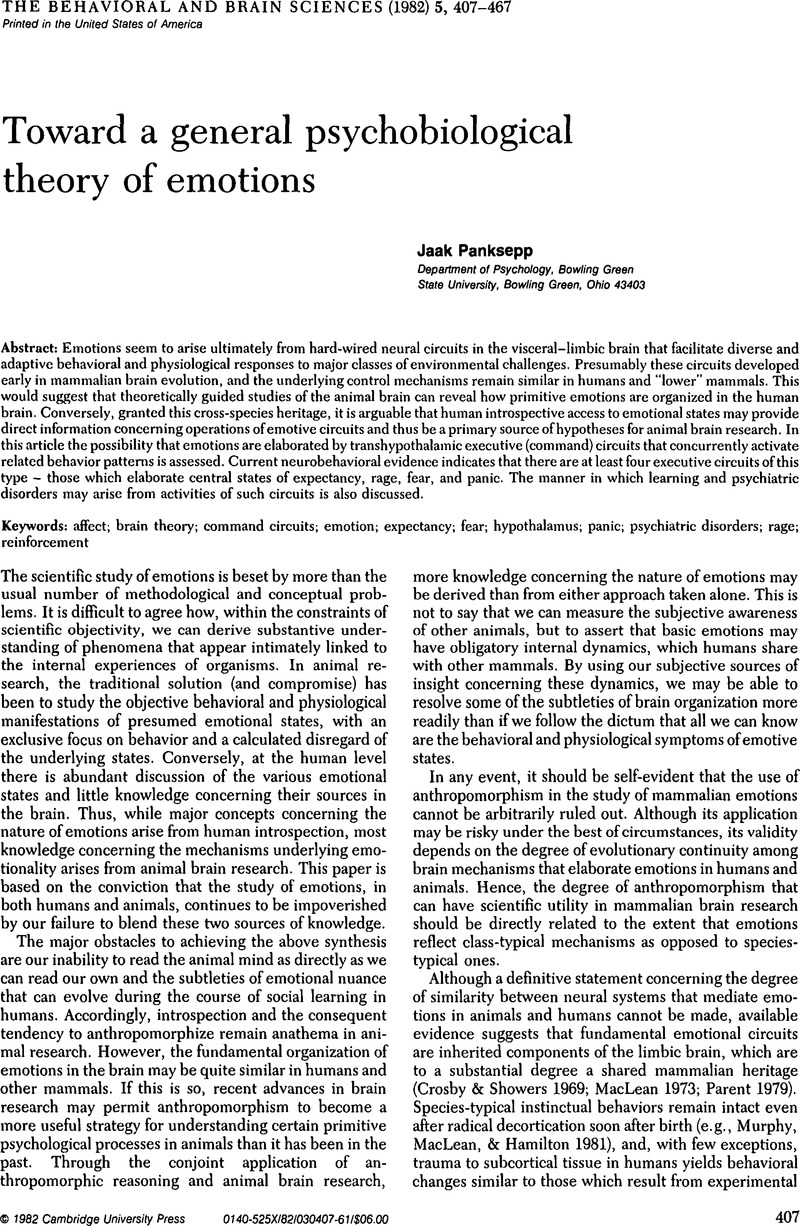Panksepp, J. (
1981a) Hypothalamic integration of behavior: Rewards, punishments, and related psychological processes. In:
Handbook of the hypothalamus. vol. 3, pt. B, Behavioral studies of the hypothalamus, ed.
Morgane, P. J. &
Panksepp, J., pp.
289–
431.
New York:
Marcel Dekker. [tarJP]
Google Scholar 